Kuinka kauan voit ajaa talon akun varmuuskopiossa?
Kun virta sammuu, Ensimmäinen kysymys kaikkien mielestä on, "Kuinka kauan tämä kestää?" Jos sinulla on kodin akun varmuuskopio, Seuraava kysymys on, "Kuinka kauan tulee minun voimani kestää?" Järjestelmäsi ajonajan ymmärtäminen on avain todellisen mielenrauhan ja energian kestävyyden saamiseen.
Aika, jonka voit käyttää talosi akun varmuuskopiossa, riippuu kokonaan kahdesta avaintekijästä: akkujärjestelmän energiakapasiteetti (mitattu kilowattitunneina, tai kWh) ja kodin voiman määrä kuluttaa (Sähkökuorma). Tyypillinen moderni seinälle kiinnitetty akkuvarmuuskopio 10-15 KWH voi suorittaa välttämättömiä laitteita 12-24 tuntia, kun taas suurempi järjestelmä voi kestää päiviä, varsinkin kun aurinkopaneelit lataavat sen.
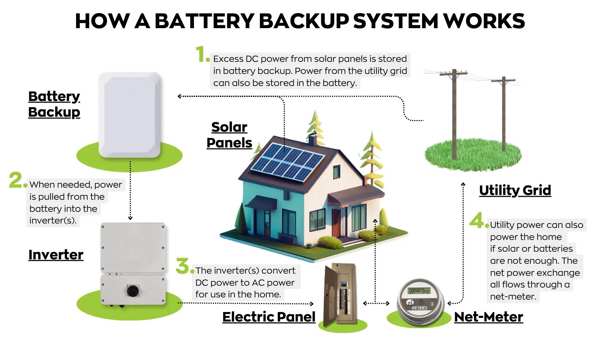
klo Gycx aurinko, Olemme erikoistuneet akkujen varmuuskopiointijärjestelmien suunnitteluun, jotka täyttävät asiakkaidemme erityistarpeet ajonaikaan ja energian riippumattomuuteen. Kyse ei ole kaikille sopivalle vastaukselle, Mutta räätälöidyn ratkaisun luomisesta. Tutkitaan joitain yleisimpiä kysymyksiä kodin akun varmuuskopiosta.
On 10 kW: n akku tarpeeksi talon ajamiseen?
10 kWh akku on erittäin suosittu kodin energian varastointia varten, Mutta riittääkö koko talosi ajaminen? Se on hieno kysymys, mutta ensin, Meidän on selvennettävä terminologiaa: Akun kapasiteetti mitataan kWh (kilowattitunnit), mikä on energian määrä, jonka se varastoi.
A 10KWH -akku riittää usein ajamaan välttämättömät piirit tyypillisessä talossa useita tunteja tai jopa yön yli. Tämä sisältää esimerkiksi valot, jääkaappi, Internet -modeemi, faneja, Ja jotkut lääkinnälliset laitteet. kuitenkin, Yksi 10 kWh akku on yleensä Ei tarpeeksi koko talon ajamiseen, etenkin suuren kanssa, Virta-nälkäiset laitteet, kuten keskusilmastointi, pitkään.
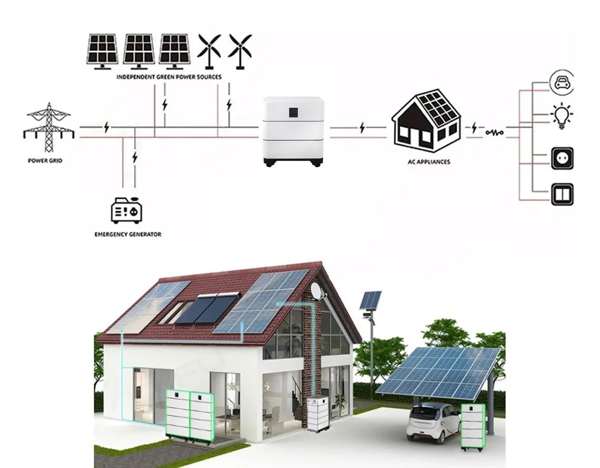
Sukeltaa syvemmälle: Koko Essentials Vs: lle. Koko koti
Vastaus "riittääkö se?" Riippuu tavoitteestasi.
- Essentialit: Jos tavoitteesi on pitää kriittiset laitteet käynnissä seisokin aikana, 10 kWh akku on upea ratkaisu. Jos olennaiset kuormasi lisäävät jatkuvaa arvontaa 500 wattia, 10 kWh akku voisi virtaa ne melkein 20 tuntia (10,000 Heila / 500 W = 20 tuntia).
- Koko talon johtaminen: Kaiken ajaminen normaalisti, Sinun on harkittava huippukuormiasi. Pelkästään ilmastointilaite voi piirtää 3,000-5,000 wattia. Jos kokonaiskuormasi on 4,000 wattia (4 kW), Sama 10 kWh akku kestäisi vain 2.5 tuntia (10 kWh / 4 KW = 2.5 tuntia).
Siksi moderni seinälle kiinnitetyt akkuvarmuuskopiot ovat usein modulaarisia. Voit asentaa yhden 10 kWh tai 13,5 kWh yksikön välttämättömyyden kattamiseksi, tai voit "pinota" kaksi tai kolme yksikköä yhdessä 20-30+ KWH-kapasiteetti, jota tarvitaan todelliseen koko kodin varmuuskopioon. Gycx Solarissa, Suunnitteluprosessimme alkaa kuormitusanalyysillä, joka auttaa sinua päättämään, mikä varmuuskopio on sinulle sopiva.
Ovat akun varmuuskopioita parempia kuin generaattorit?
Vuosikymmenien ajan, Sähkökatkojen ratkaisu oli fossiilisen polttoaineen generaattori. Mutta nykyaikaisten akkujen varmuuskopioiden noustessa, Mikä vaihtoehto on parempi nykypäivän asunnonomistajalle?
Useimpiin asuinrakennuksiin, a Akun varmuuskopiointijärjestelmä on parempi kuin generaattori. Paristot välitön ja hiljainen toiminta, tuottaa päästöjä, vaatii käytännössä ilman huoltoa, ja voidaan integroida saumattomasti aurinkopaneeleihin lataamiseksi puhtaalla energialla. Generaattorit saattavat tarjota alhaisemmat alkuperäiset kustannukset suuren tehon tuotolle, He ovat meluisia, vaativat jatkuvaa polttoaineen varastointia ja huoltoa, ja luo haitallisia pakokaasuja.
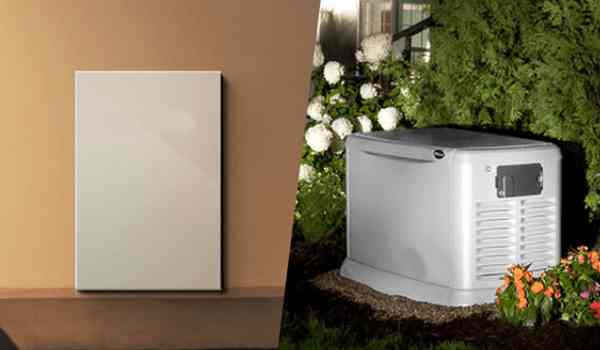
Sukeltaa syvemmälle: Head-to-päähän vertailu
Katsotaanpa keskeisiä eroja:
| Ominaisuus | Akun varmuuskopio (BESS) | Kannettava/valmiustilan generaattori |
|---|---|---|
| Reaktioaika | Hetkellinen. Virta on saumatonta, Et ehkä edes huomaa, että ruudukko on alhaalla. | Viivästynyt. Vaatii manuaalisen käynnistyksen tai automaattisen siirtokytkimen a 10-30 toinen viive. |
| Melutaso | Käytännöllisesti katsoen. Kuulet korkeintaan hiljaisen hölyn invertterin. | Erittäin kova. Voi olla häiritsevä sinulle ja naapureillesi. |
| Polttoaine | Varastoi sähköä ruudukosta tai aurinkoenergosta. Polttoainetta ei vaadita. | Vaatii jatkuvaa bensiiniä, propaani, tai diesel. |
| Huolto | Minimaalinen. Ei liikkuvia osia, Ei öljyn muutoksia. | Säännöllinen. Vaatii öljyn muutoksia, polttoaineenvakain, ja säännölliset testit. |
| Päästöt | Ei yhtään. Puhdas ja turvallinen asennettuna autotalliin tai hyödyllisyyshuoneeseen. | Haitalliset pakokaasut (Hiilimonoksidi). On sijoitettava kaukana ikkunoista ja ovista. |
| Juoksukustannukset | Erittäin alhainen tai vapaa, kun se on ladattu aurinkoenergialle. | Korkea ja muuttuva, polttoaineen hinnoista riippuen. |
| Integrointi | Täydellinen aurinkoenergialle ja aurinko-investointiesi maksimoimiseksi. | Täysin erillinen järjestelmä. |
Vaikka generaattorilla voi silti olla paikka tietyille ruudukko- tai teollisille sovelluksille, jotka vaativat erittäin pitkiä juoksuja ilman aurinkoa, nykyaikaiseen kodin kestävyyteen, puhdas, hiljainen, ja automaattinen akun varmuuskopiointijärjestelmä on parempi valinta.
Käytätkö akun varmuuskopioita paljon sähköä?
Tukkaako akun varmuuskopiojärjestelmä huomattavan määrän energiaa vain kytkemällä ja valmiina? On kohtuullinen kysymys, onko järjestelmä itsessään energian tyhjennys.
Ei, Nykyaikaiset akun varmuuskopiojärjestelmät eivät käytä paljon sähköä. Ne on suunniteltu erittäin tehokkaiksi. Tärkein energia "kustannukset" on pieni menetys lataus- ja purkamisprosessin aikana, tunnettu edestakainen tehokkuus. Korkealaatuisella litiumakkujärjestelmällä on edestakainen tehokkuus 85-95% tai korkeampi, tarkoittaen hyvin vähän energiaa on hukkaan. Heillä on myös minimaalinen valmiustilan virtaus pitää heidän elektroniikansa verkossa ja valmiina.
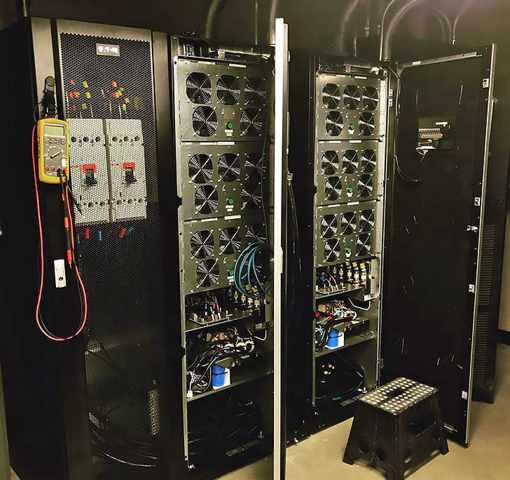
Sukeltaa syvemmälle: Tehokkuus ja valmiustila
Havataan Bess käyttää energiaa:
- Edestakainen tehokkuus (Rte): Tämä on tärkein tekijä. Jos laitat 10 kwh aurinkoenergiaa akkuun 95% Rte, saat 9.5 KWh käyttökelpoisesta sähköstä takaisin. The 0.5 KWH on menetetty lämpöä muuntamisen ja kemiallisten prosessien aikana. Tämä on erittäin alhainen menetys verrattuna muihin energian varastointimuotoihin. Vanhemmat lyijyhappojen järjestelmät, esimerkiksi, olla alhaisempi 80-85%.
- Valmiustila/tyhjäkäynti: Järjestelmän taajuusmuuttajan ja akun hallintajärjestelmä (BMS) täytyy olla virtalähde 24/7 seurata järjestelmää ja olla valmis tarjoamaan virtaa heti. Tämä valmiustila on tyypillisesti hyvin pieni, usein 20-100 wattia. Vaikka se kuluttaa energiaa 24 tunnin aikana, Se on pieni murto -osa siitä, mitä järjestelmä voi tallentaa ja toimittaa.
- Itsensä puristaminen: Kuten olemme keskustelleet muissa artikkeleissa, Itse akku menettää hitaasti pienen määrän latausta ajan myötä (1-3% kuukaudessa LFP -litiumissa). kuitenkin, Koska järjestelmä on aina kytketty, Inverterin kelluva varaus kompensoi tämän helposti.
Verrattuna massiiviseen energiamäärään a seinälle kiinnitetty akkuvarmuuskopio voi säästää tallentamalla aurinkoenergiaa tai korvaamatonta turvallisuutta, jonka se tarjoaa seisokin aikana, Pieni määrä energiaa, jota se käyttää käyttämiseen, on vähäinen.
Kuinka monta vuotta akun varmuuskopio kestää?
Akun varmuuskopiointijärjestelmä on merkittävä sijoitus kodin infrastruktuuriin. Kuinka kauan voit odottaa tämän sijoituksen kestävän ennen kuin se on vaihdettava?
Moderni seinälle kiinnitetty akkuvarmuuskopio joka käyttää LFP (Litiumrautafosfaatti) akkukemia on pitkäaikainen omaisuus, jolla on odotettu operatiivinen käyttöikä 10 to 20 vuotta. Näitä järjestelmiä tukee tyypillisesti a 10-Vuoden valmistajan takuu joka takaa tietyn suorituskyvyn, antaa sinulle luottamuksen heidän kestävyyteen. Tämä on valtava harppaus vanhemmista lyijyautojärjestelmistä, joka vaati usein korvaamista jokainen 3-7 vuotta.
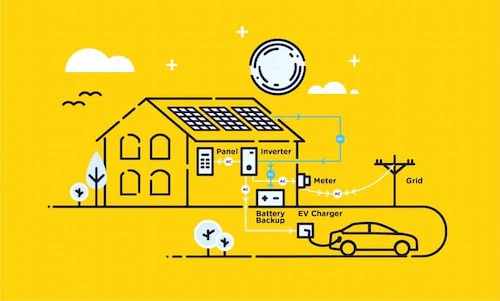
Sukeltaa syvemmälle: Pitkäaikaisen akkujärjestelmän tekemiset
Nykyaikaisen akun varmuuskopion pitkäikäisyys on seurausta useista keskeisistä teknologisista kehityksistä:
- LFP -kemia: Litiumrautafosfaatti on uskomattoman vakaa ja vankka. Se pystyy käsittelemään ja puretaan päivittäin tuhansien syklien kohdalla ilman merkittävää hajoamista. Akku 6,000 Syklit voisivat teoreettisesti kestää yli 16 vuosia yhdellä syklillä päivässä.
- Edistynyt akunhallintajärjestelmä (BMS1. ): BMS on akun vartija. Se suojaa soluja stressaavilta olosuhteilta, kuten ylikuormitus, ylikuormitus, ja äärimmäiset lämpötilat, jotka kaikki ovat tärkeitä sen elämän pidentämiseksi.
- Oikea lämmönhallinta: Bess -kotelo, onko se a seinälle asennettava akku yksikkö tai kaappi, on suunniteltu häviämään lämpöä ja pitämään solut toimivat ihanteellisella lämpötila -alueella. Tämä estää ennenaikaisen ikääntymisen.
- Takuu: Kymmenen vuoden takuu on hyvämaineisten kodin energian varastointijärjestelmien teollisuusstandardi. Se takaa tyypillisesti, että akku säilyttää tietyn määrän alkuperäistä kapasiteettiaan (ESIM., 70%) takuusajan loppuun mennessä.
Gycx Solar Story: "Kun puhumme asiakkaiden kanssa, Korostamme, että he eivät vain osta akkua, He sijoittavat vähintään kymmenen vuoden energiaturvallisuuteen. Käytämme yksinomaan ylimpien valmistajien LFP-pohjaisia järjestelmiä, koska niiden todistettu pitkäikäisyys varmistaa, että asiakkaamme saavat parhaan mahdollisen pitkäaikaisen arvon."
Niin, ovatko akun varmuuskopiot sen arvoisia? Asunnonomistajille, jotka etsivät suojaa sähkökatkoksilta ja tapa maksimoida aurinkoinvestoinnit, Vastaus on selkeä kyllä. Moderni seinälle kiinnitetty akkuvarmuuskopio tarjoaa hiljaista, puhdas, ja välitön voima, joka on paljon parempi kuin generaattori. Ja yli kymmenen vuoden ajan, Se on kestävä ja arvokas lisä mihin tahansa kotiin.
Jos olet valmis tutkimaan, kuinka akun varmuuskopio voi tarjota perheellesi energian kestävyyden, Gycx Solarin asiantuntijatiimimme on täällä auttamassa sinua valitsemaan ja kokoa täydellisen järjestelmän. Ota yhteyttä tänään ammatilliseen kuulemiseen!
BMS: n käsitteen ymmärtäminen auttaa sinua paremmin vertaamaan ja ymmärtämään akkuun liittyviä tietokonsepteja. Tämä auttaa sinua valitsemaan tuotteen, joka sopii parhaiten tarpeisiisi yrityksestämme. ↩
